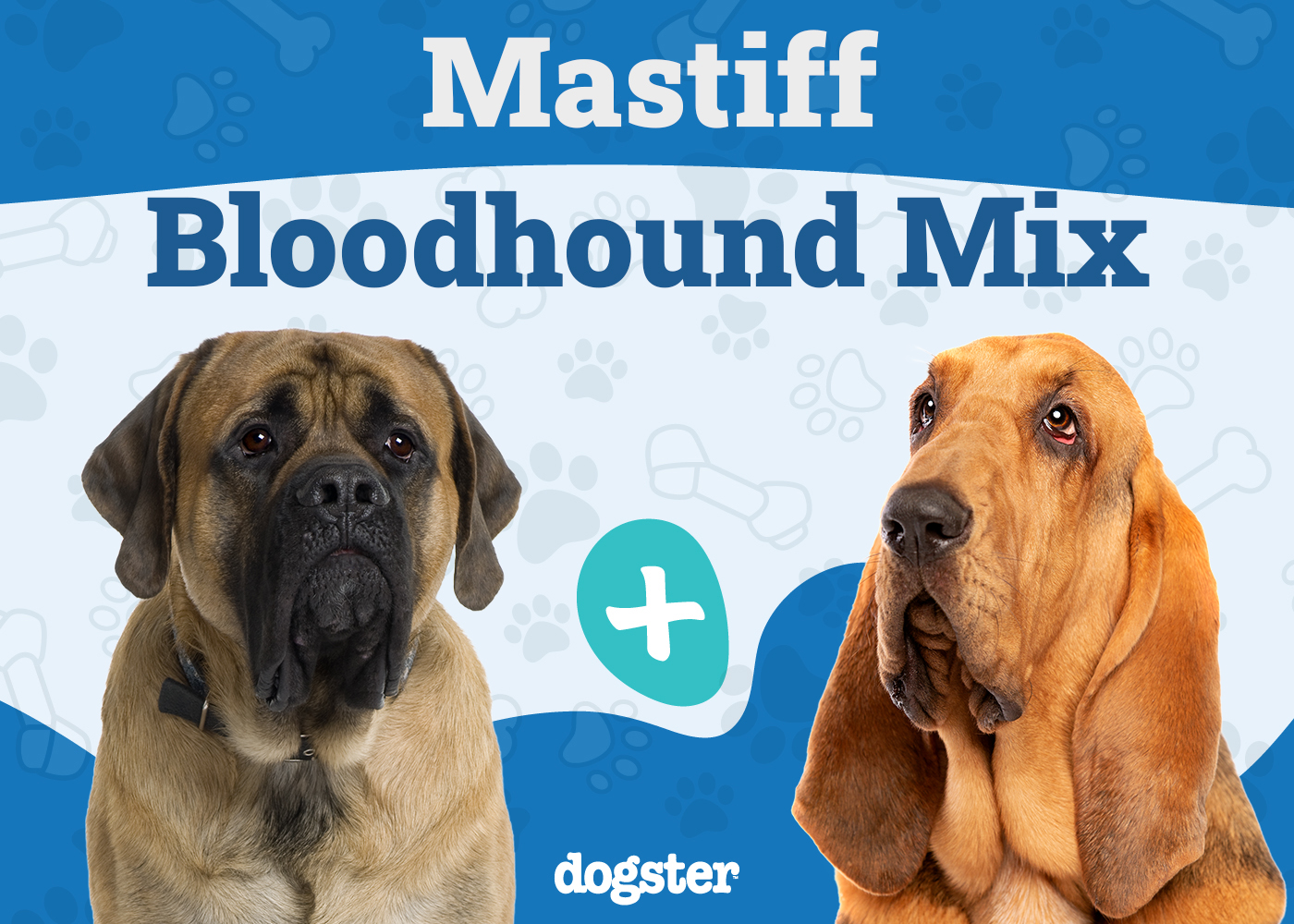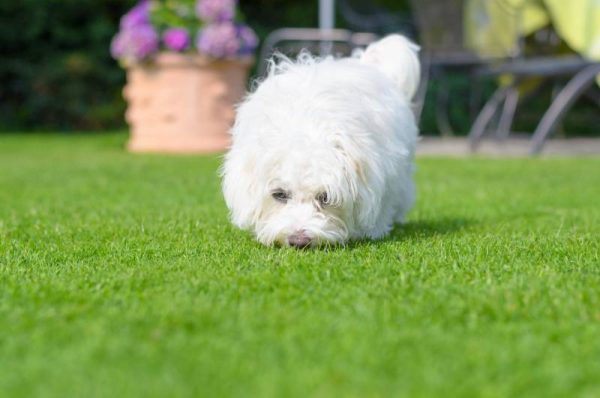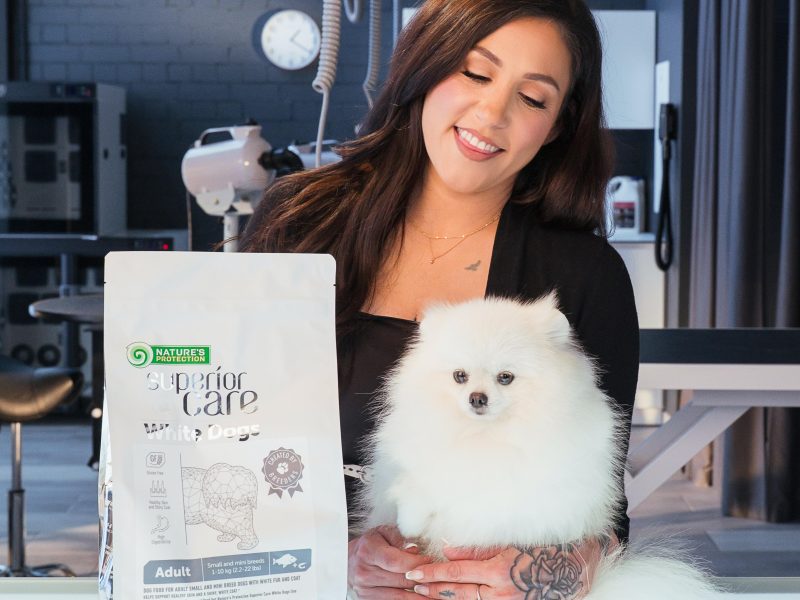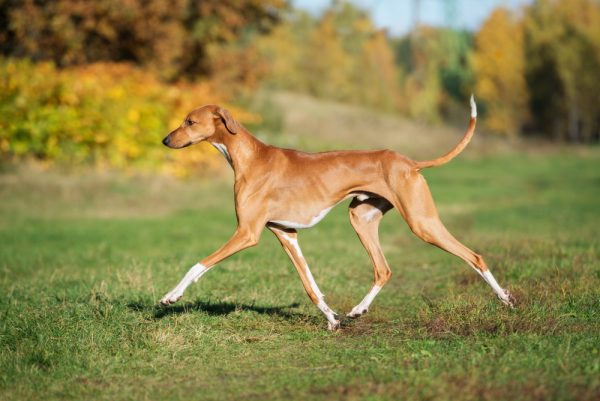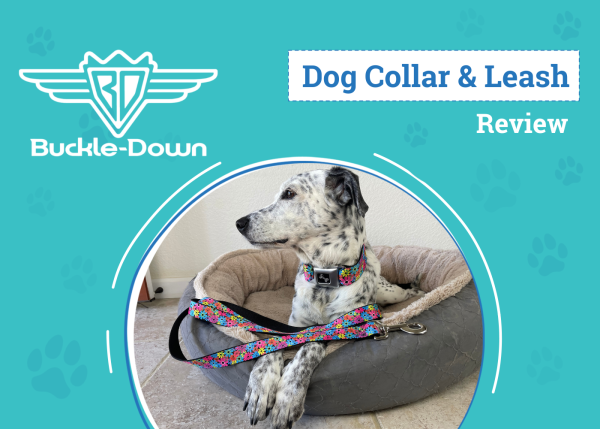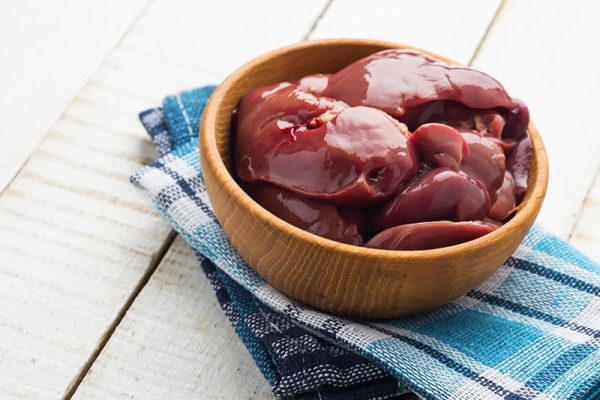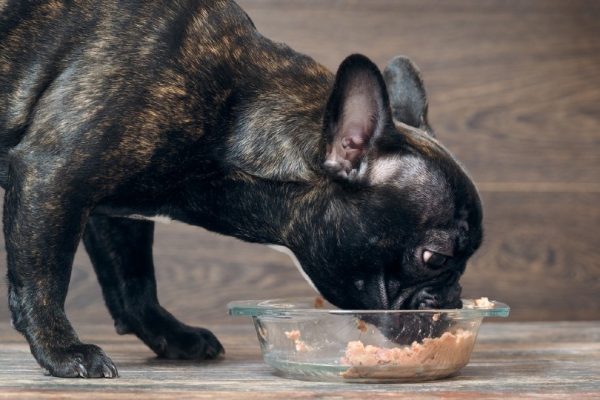In this article
View 8 More +The Mastiff Bloodhound mix is a rare and unique breed of dog that combines two iconic breeds into one incredible specimen. The Mastiff Bloodhound can be simply massive, making them the perfect snuggly companion. There is a lot to learn about the Mastiff Bloodhound before considering getting one for yourself, including their size, food considerations, training needs, and health conditions.
Here is everything you need to know about the Mastiff Bloodhound mix.
Breed Overview
Height:
23–27 inches
Weight:
130–200 pounds
Lifespan:
8–12 years
Colors:
Black, tan, liver, red, white, and brindle
Suitable for:
People looking for a large and loyal dog, people who like having dogs that make them feel secure
Temperament:
Loyal, mild-mannered, alert, and intelligent
The Mastiff Bloodhound mix is a combination of a Mastiff and a Bloodhound. Mastiffs and Bloodhounds are two large dogs that were bred for specific purposes. Mastiffs were ancient hunting and guard dogs that date to Roman times. Bloodhounds are exceptional hunting and tracking dogs. The combination is a large mixed-breed dog with a lot of personality and positive characteristics.
Mastiff Bloodhound Mix Characteristics

Mastiff Bloodhound Mix Puppies
Mastiff Bloodhound mixes are not common dogs. Finding a breeder that will provide a healthy Mastiff Bloodhound can be a severe challenge. If you are bent on getting one of these dogs, you might need to contact multiple breeders (one Mastiff and one Bloodhound) and see if you can set up a litter of puppies for yourself.
If you cannot find a good breeder willing to work with you, you can always keep an eye out for these dogs at rescue groups or shelters. Many times, large dogs are dumped into shelters or rescues because of their size, especially if they’ve scared or hurt a child by mistake. Monitoring local shelters could be the best way to find a Mastiff Bloodhound mix, but they likely won’t be a puppy.
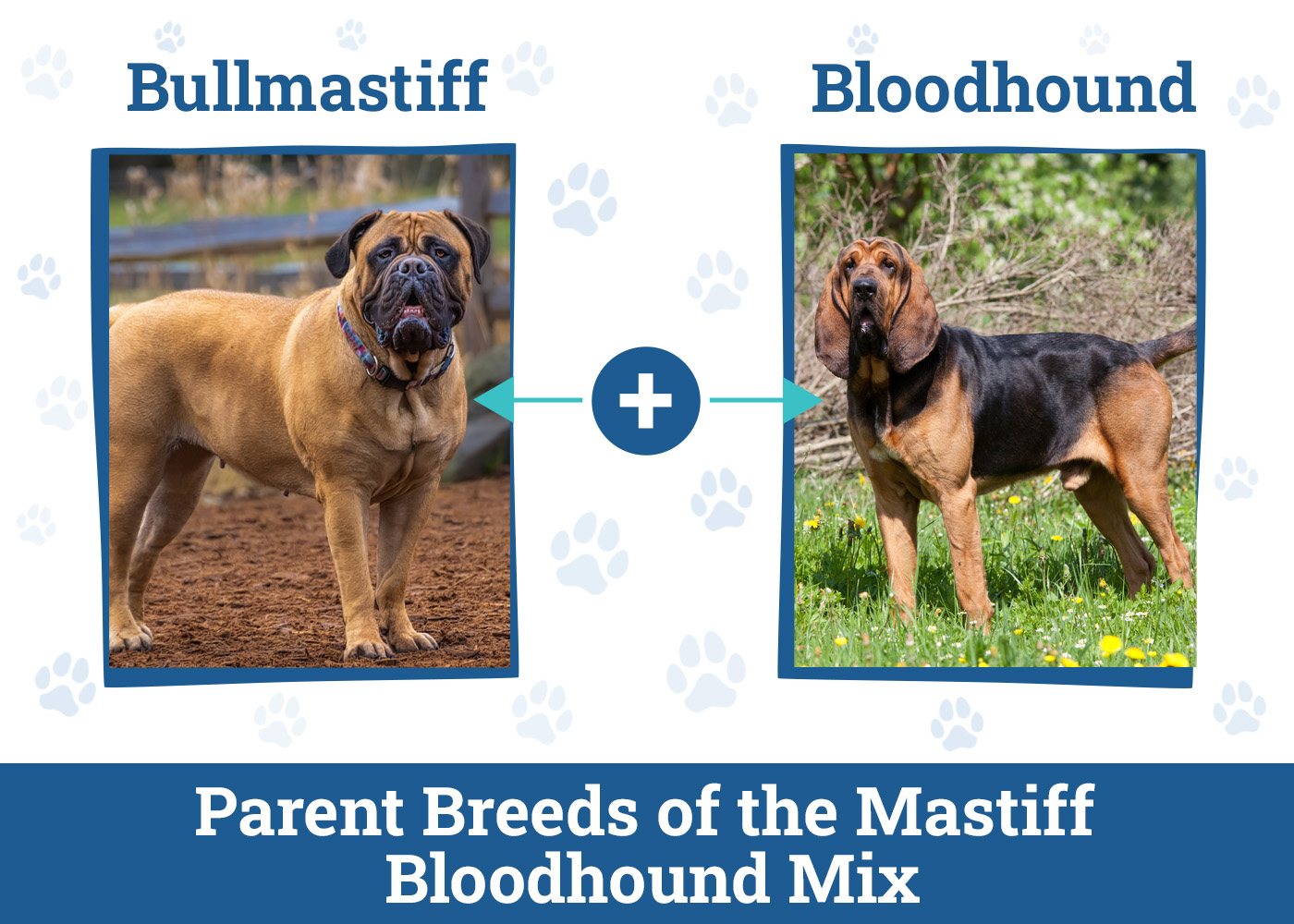

Temperament & Intelligence of the Mastiff Bloodhound Mix
Are These Dogs Good for Families?
Almost always. Mastiff Bloodhounds can be excellent family dogs due to their loyal personality and calm nature. The biggest thing to worry about with a Mastiff Bloodhound is their size. These dogs can be incredibly large and heavy. That makes controlling them difficult for children. It can also pose a risk to small children like babies or toddlers who do not know how to read and handle a large dog.
Mastiff Bloodhounds can knock over and injure small children without meaning to, especially if they are hyper or excited. If you are inexperienced with large dogs or have small children, you might want to pause before jumping into a Mastiff Bloodhound mix.
Does This Breed Get Along with Other Pets?
Usually, but not always. Mastiff Bloodhound mixes are a combination of two hunting dogs. That makes them ideal companions for other dogs. Hunting dogs have evolved to be a part of a group or pack consisting of people and other dogs, so they do well in those environments.
However, they can have a strong prey drive which can make them problematic for owners of small animals like cats, rabbits, guinea pigs, and other similar pets. Mastiff Bloodhound mixes can chase, stalk, or even kill small animals if they choose to. Some Mastiff Bloodhounds can go from 0 to 60 extremely quickly when they switch into hunting mode, which is something to be aware of.

Things to Know When Owning a Mastiff Bloodhound Mix:
Food & Diet Requirements
Since Mastiff Bloodhounds are so large, they are going to eat a considerable amount of food. Adult Mastiff Bloodhounds are going to need between 5 and 10 cups of food per day, especially if they are active. That equates to 2 to 3 pounds of dry food per day. These amounts can add up to a hefty price tag over time.
It is recommended that you feed your Mastiff Bloodhound high-quality dry food. It might be a good idea to provide them with food that promotes healthy joints as their weight can put wear and tear on their joints over time. Joint supplement foods are more expensive than plain foods, so be aware of the cost ahead of time.
Exercise
Mastiff Bloodhounds will need 1 to 2 hours of low-intensity exercise every day. Unlike other dogs, Mastiff Bloodhounds do not need high-intensity exercise to be healthy. Low-intensity exercise includes activities like sniffing around in the backyard and long walks. Older Mastiff Bloodhounds will be more than happy to lay around and be lazy, but they still need to get regular exercise to keep their joints healthy as they age.
You do not want a 200-pound dog developing mobility issues, as that can quickly turn into a nightmare for everyone involved.
Training
Due to the large size and strong nose of the Mastiff Bloodhound, they will need extensive training. Firm training and positive socialization are imperative for a Mastiff Bloodhound. These dogs can be willful, especially if they are excited or if they are on the trail of a good scent.
If you cannot control your Mastiff Bloodhound, it can be a huge problem due to their weight and strength. Use positive reinforcement, ignore bad behaviors, and try to get your Mastiff Bloodhound under voice control as much as possible for the best results.
Grooming ✂️
Both Mastiffs and Bloodhounds have fairly minimal grooming considerations. The Mastiff Bloodhound will have a thick, wiry coat that is prone to shedding (usually in the fall and spring). Mastiff Bloodhounds will need semi-regular grooming to remove dead hair and skin. If you let your dog spend a lot of time outside, you will also need to give them periodic baths to keep them smelling their best.
You will not need to seek professional grooming services for a Mastiff Bloodhound in most situations.
Health and Conditions
Mixed breeds are typically very healthy, but in this case, the Mastiff Bloodhound inherits some serious problems from both their Mastiff and Bloodhound pedigrees. There are some major health conditions that you need to be aware of before getting a Mastiff Bloodhound mix.
Mastiff Bloodhounds can suffer from eye problems, including retinopathy and cataracts. They can also experience bloat, which is a potentially life-threatening condition that affects deep-chested and large dogs. Lastly, Mastiff Bloodhounds are prone to heart conditions, including heart failure and degenerative mitral valve disease.
- Ear infections
- Skin conditions
- Joint problems in aging dogs
- Eye and vision problems
- Bloat
- Heart problems

Male vs. Female
The biggest difference between male and female Mastiff Bloodhounds is in the size. Males tend to be considerably larger than females. Some female Mastiff Bloodhounds might only weigh 120 pounds, while males can weigh up to 200 pounds or more. Males also tend to have a stronger hunting drive and tend to be more stubborn than females.
If you want to try and keep the size down, you should consider getting a female. If you want to be more active and spend time outdoors with your dog, you might want to consider looking for a male.
3 Little-Known Facts About the Mastiff Bloodhound Mix
1. Mastiff Bloodhound Mixes Have Incredible Noses
The Bloodhound has one of the most refined senses of smell in the world, and the nose of a Mastiff is no slouch either. That means that the Mastiff Bloodhound mix also has a great nose. This can be both good and bad. It allows your dog to enjoy their time outside better, but it can also make your dog stubborn if they are focused on a scent and not on what you want them to be doing.
2. They Are a Mix of Ancient Breeds
Both the Mastiff and the Bloodhound are ancient dog breeds. The Mastiff can trace its lineage all the way back to Ancient Rome, where they would serve as guard dogs in Italian manor compounds. The Bloodhound has been around since the Medieval Period.
They descended from German hunting dogs that were native to Europe. The mixed breed of today is a combination of two dogs that have been around for hundreds of years.
3. These Are Some of the Largest Mixed Breeds You Can Find
Mastiff Bloodhounds are huge dogs. These are some of the largest mixed-breed dogs that you can find anywhere. The largest Mastiff Bloodhounds can weigh 220 pounds which is simply enormous. That makes them perfect for people who love large dogs but could be a challenge for people who are not used to dogs of this size.

Final Thoughts
Mastiff Bloodhound mixes are interesting dogs that combine two of the largest hunting dogs in the world. The result is a large dog with a great nose, an alert personality, and a love of the outdoors. Mastiff Bloodhounds can be great for active families with older children or for people who are looking for a loyal companion to protect them and spend time with them at home.
There is a lot to love about Mastiff Bloodhound mixes for many dog owners.
See also:
- Bloodhound Rottweiler Mix: Care, Pictures, Info & More
- Bloodhound Lab Mix: Care, Pictures, Info & More
